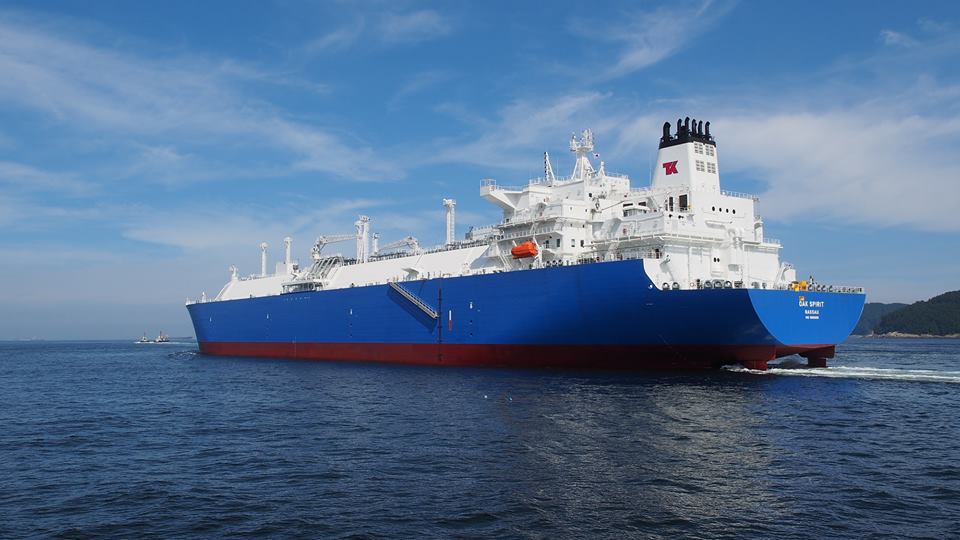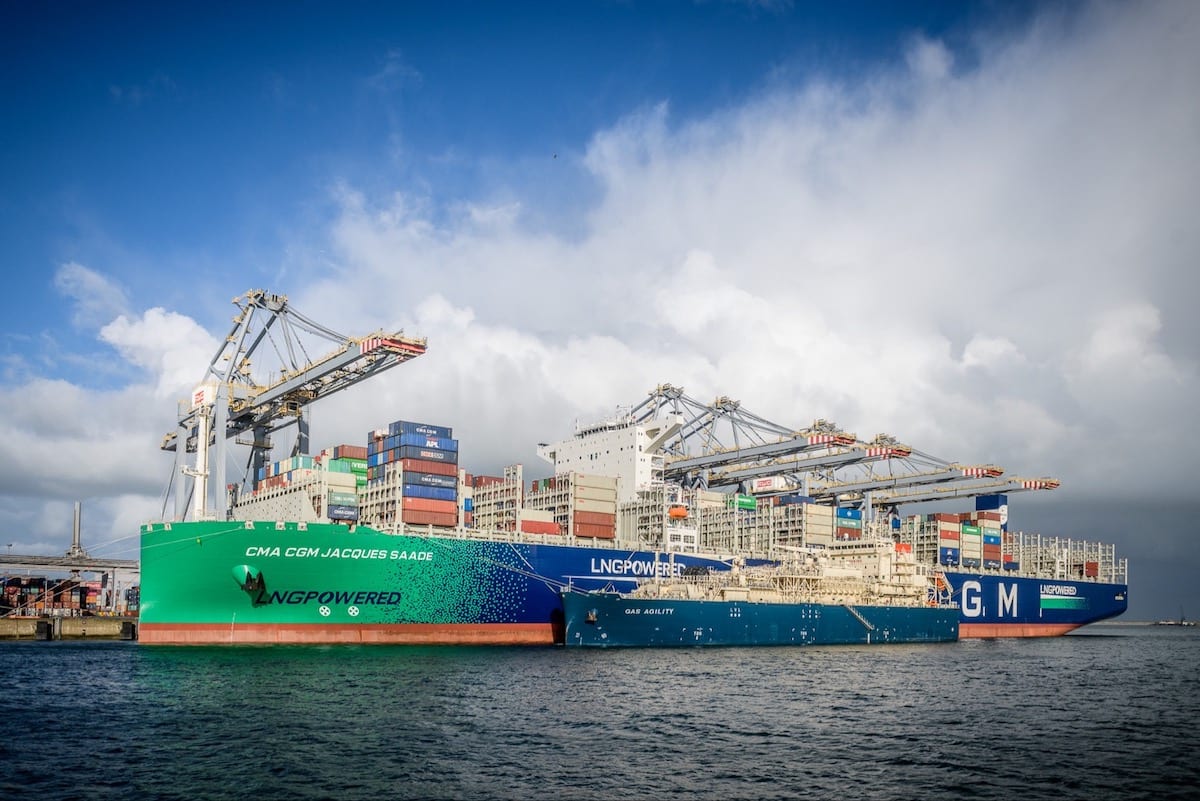File photo: Teekay Corp
By Anna Shiryaevskaya and Rakteem Katakey (Bloomberg) — When Russia’s biggest tanker operator launches four new vessels next year, they won’t just be carrying oil to northern Europe but the hopes of the liquefied natural gas industry.
Sovcomflot’s Aframax ships, capable of shifting 600,000 barrels of oil through the icy waters of the Baltic Sea to the port of Rotterdam, will be the first tankers run on LNG.
That’s good news for fuel supplier Royal Dutch Shell Plc and the other energy companies that have invested more than $700 billion in LNG projects over the past decade. While ships won’t transform the market — Energy Aspects Ltd. estimates that LNG as a marine fuel will account for less than 2 percent of total demand by 2025 — Russian tankers and Mediterranean cruise liners will help ease a global glut.
“People need to find more customers for LNG,” said Michael Newman, a shipbroker at Fearnleys A/S in London. “Big mega-projects are increasingly being replaced by smaller trains and smaller volumes, such as those for use of LNG as a transport fuel.”
Since 2014, the spot price of LNG has dropped by two-thirds to $5.4 per million British thermal units as supply swelled, crude slumped and large buyers such as Japan and Korea slowed purchases. That’s pushing the industry to look beyond long-term contracts with power utilities to find other sources of demand.
At the same time, stricter environmental standards are pushing shipowners to consider cleaner fuels such as LNG, which contains virtually no sulfur. The International Maritime Organization will from 2020 impose a sulfur cap of 0.5 percent on marine fuel, down from the current global limit of 3.5 percent.
Against that favorable backdrop, the number of LNG-fueled ships will more than double to 200 by 2020 from 77 last year and just five in 2005, according to London-based Energy Aspects.
That will boost LNG bunkering demand, excluding fuel burned by LNG carriers, to 1 million tons in three years and as much as 5 million to 7 million tons by 2025, Energy Aspects said. Total LNG demand is forecast to rise to 364 million tons in 2025, from 260 million tons last year, according to Bloomberg New Energy Finance.
BNEF estimates that LNG oversupply will peak in 2020, before turning into a shortage after 2025.
Cruise Option
Apart from the Sovcomflot contract, Shell will also supply fuel to the world’s first LNG-powered cruise ships, which will be operated by Carnival Corp. in northwest Europe and the Mediterranean from 2019.
That will come six years after the Viking Grace — operating between Turku in Finland and Stockholm in Sweden — became the first large passenger ship to use LNG in January 2013.
Carnival, which has a fleet of 102 ships, has seven vessels on order that will run on LNG.
“When our ships come along, they will be some of the biggest consumers in the maritime sector” of LNG fuel, Tom Strang, senior vice-president maritime affairs at Carnival, said in an April 6 phone interview. “We are confident that there is going to be plenty of LNG. The question is, is there LNG where we need it?’’
The infrastructure to support the use of LNG in the shipping industry is expanding, with major European ports required to have bunkering for the fuel by 2025, the International Gas Union said in a report this month.
“Ports are also largely indicating the willingness to move quickly to support demand, once it begins to strengthen,” the gas lobby group said.
Bunkering Network
The Gate terminal in Rotterdam has added facilities for loading smaller vessels and bunkering operations. Shell, the terminal’s first customer, will introduce a dedicated bunkering vessel this summer, according to Stefaan Adriaens, commercial manager at Gate.
“We see an uptick in well-founded inquiries for using this jetty,” said Adriaens. The facility has attracted Skangas as its second client, he said.
Total SA agreed this month to buy LNG from Pavilion Energy Pte for onward sale to ships in the port of Singapore, one of the world’s biggest. The French oil giant wants to supply 1 million tons of LNG annually to fuel ships by 2025.
“Developing a competitive worldwide LNG bunkering network will be key for the industry,” Total Chief Executive Officer Patrick Pouyanne said in a statement on April 4.
© 2017 Bloomberg L.P
Unlock Exclusive Insights Today!
Join the gCaptain Club for curated content, insider opinions, and vibrant community discussions.

 Join The Club
Join The Club













